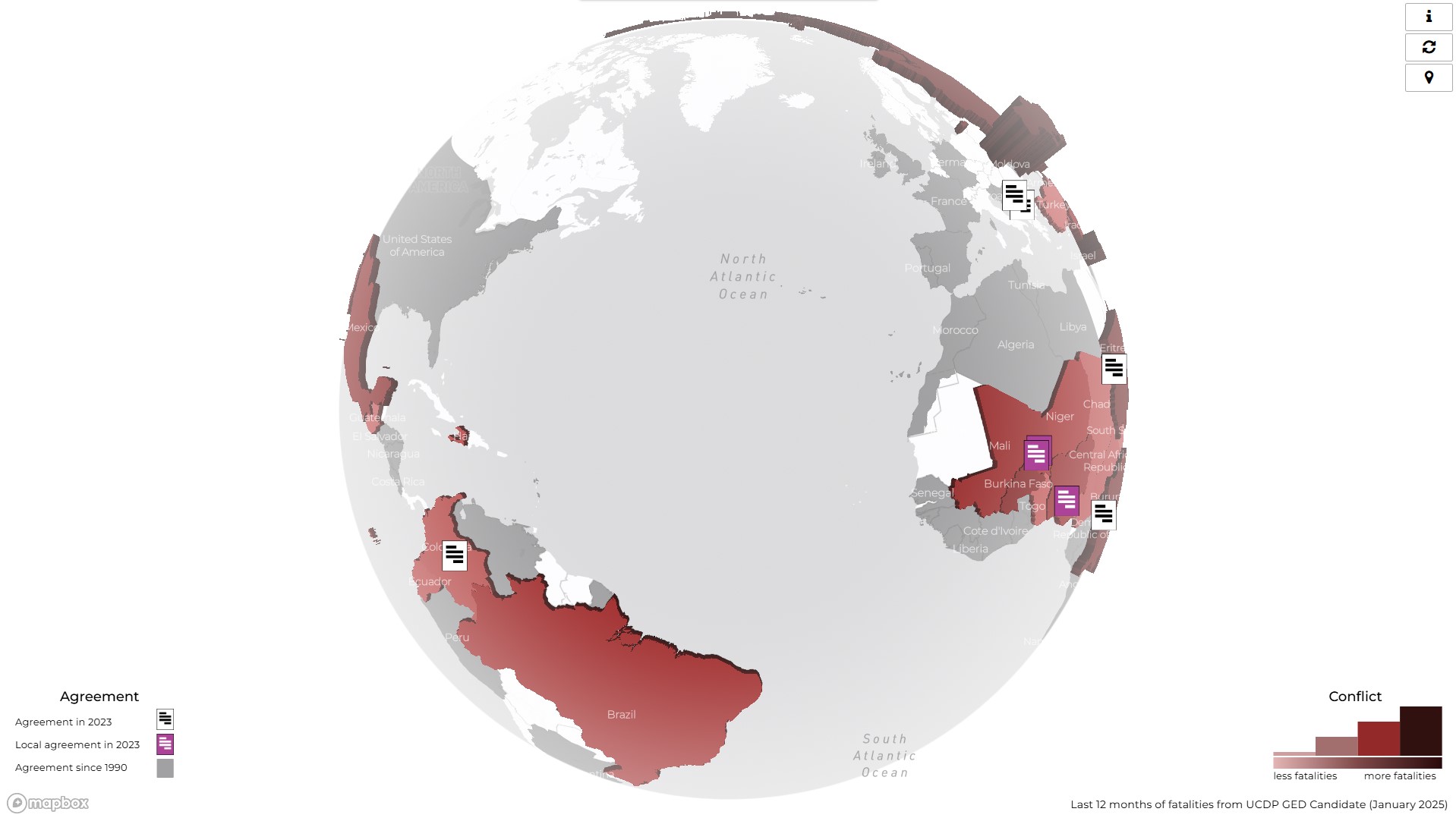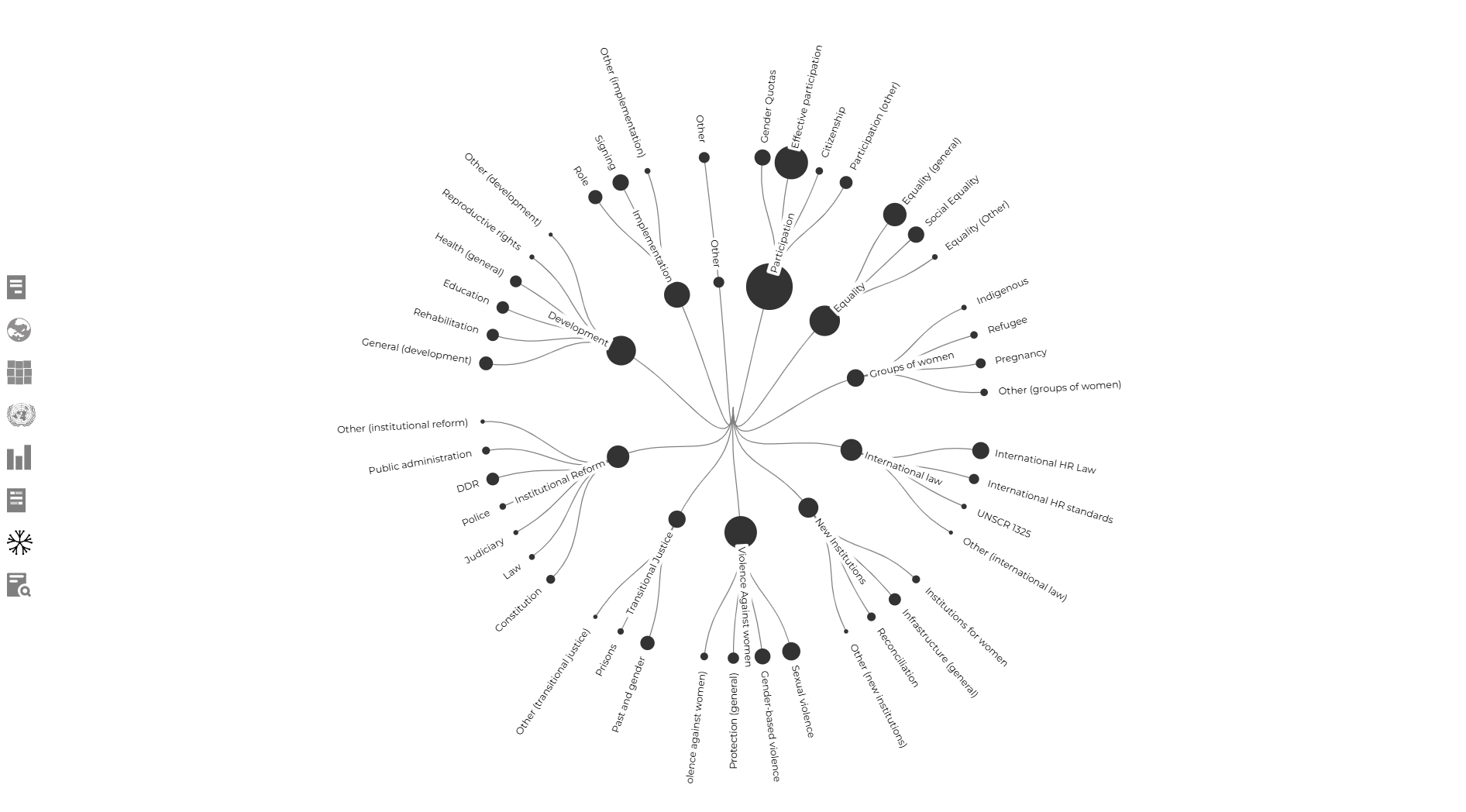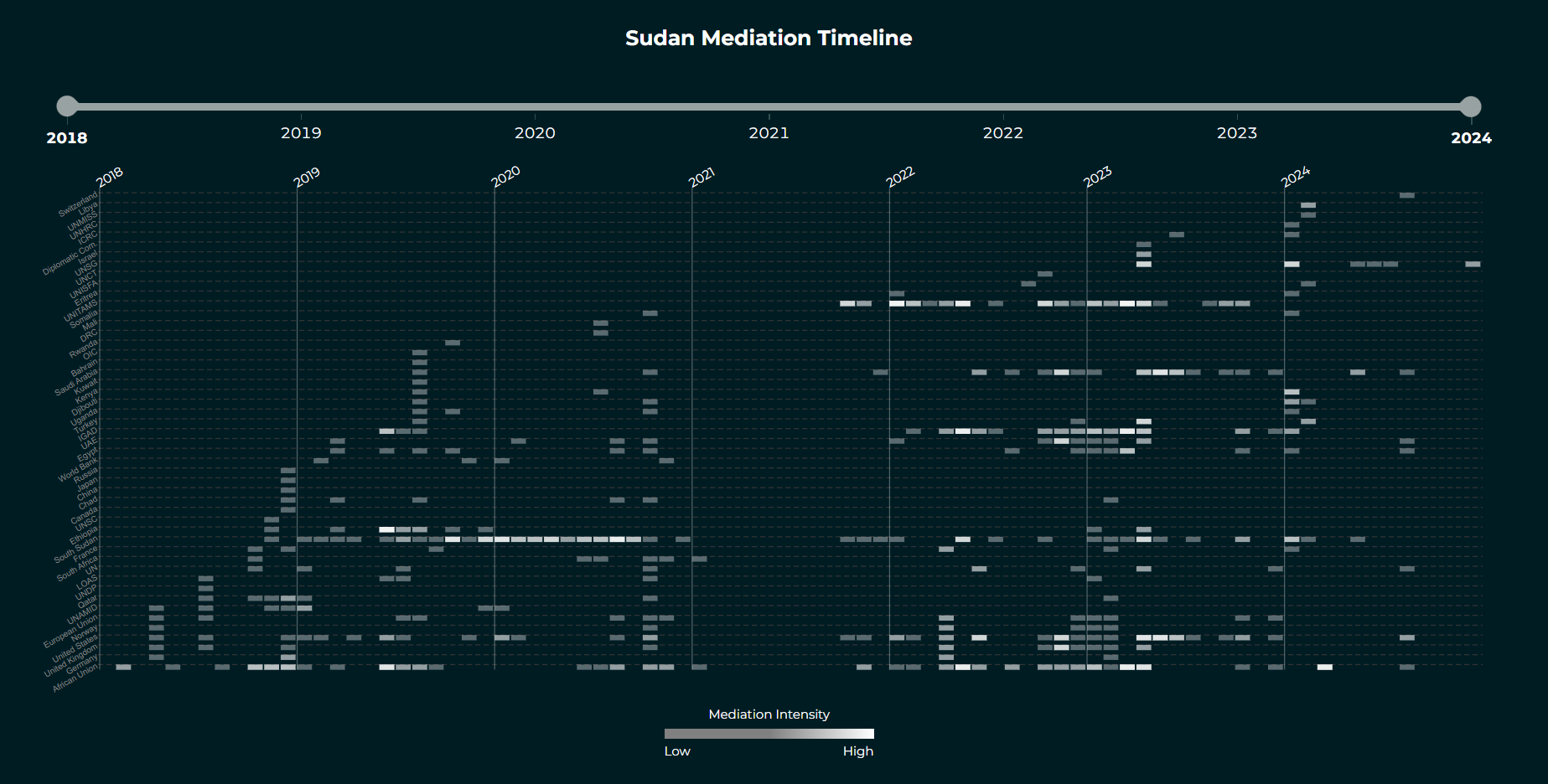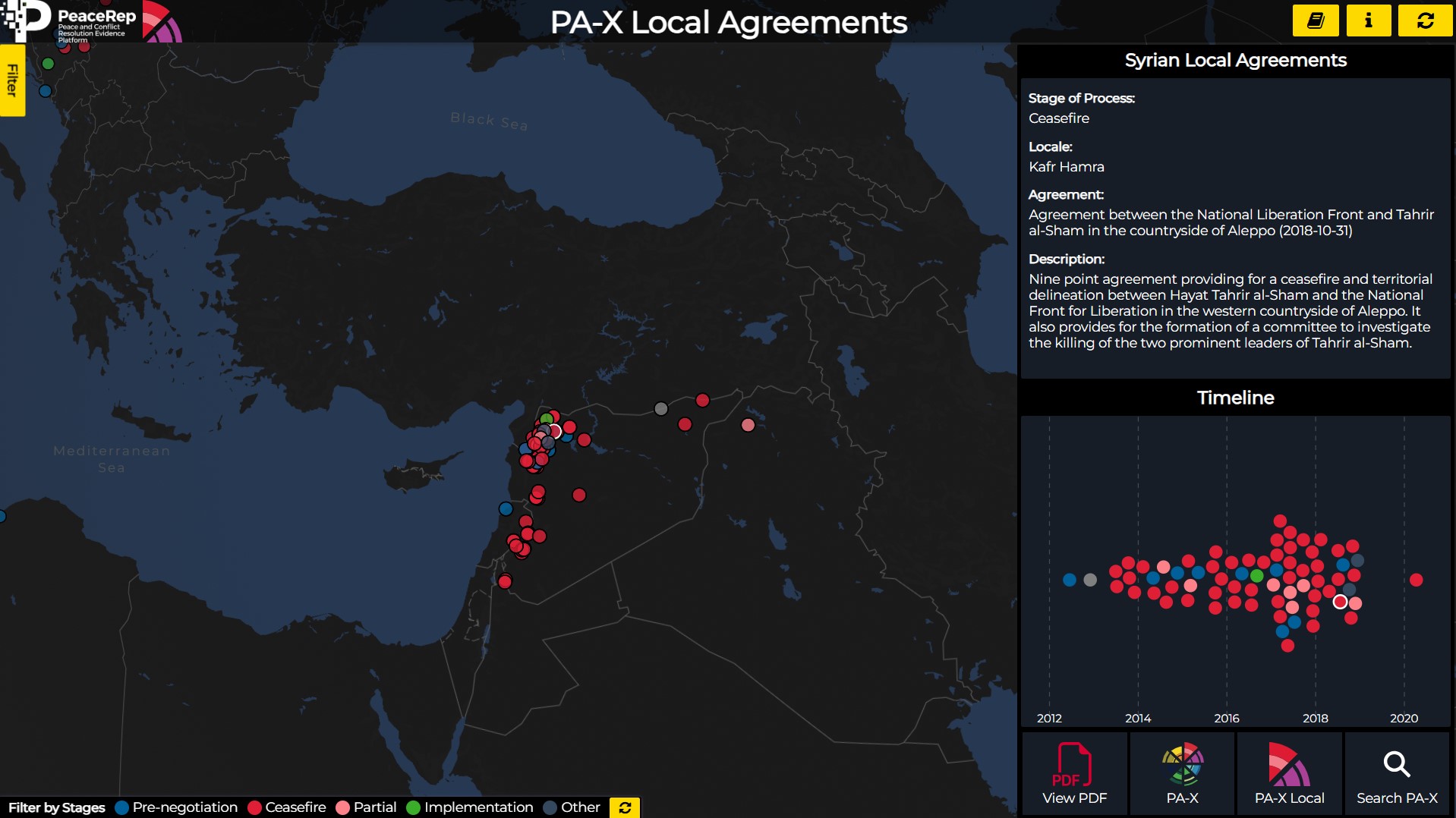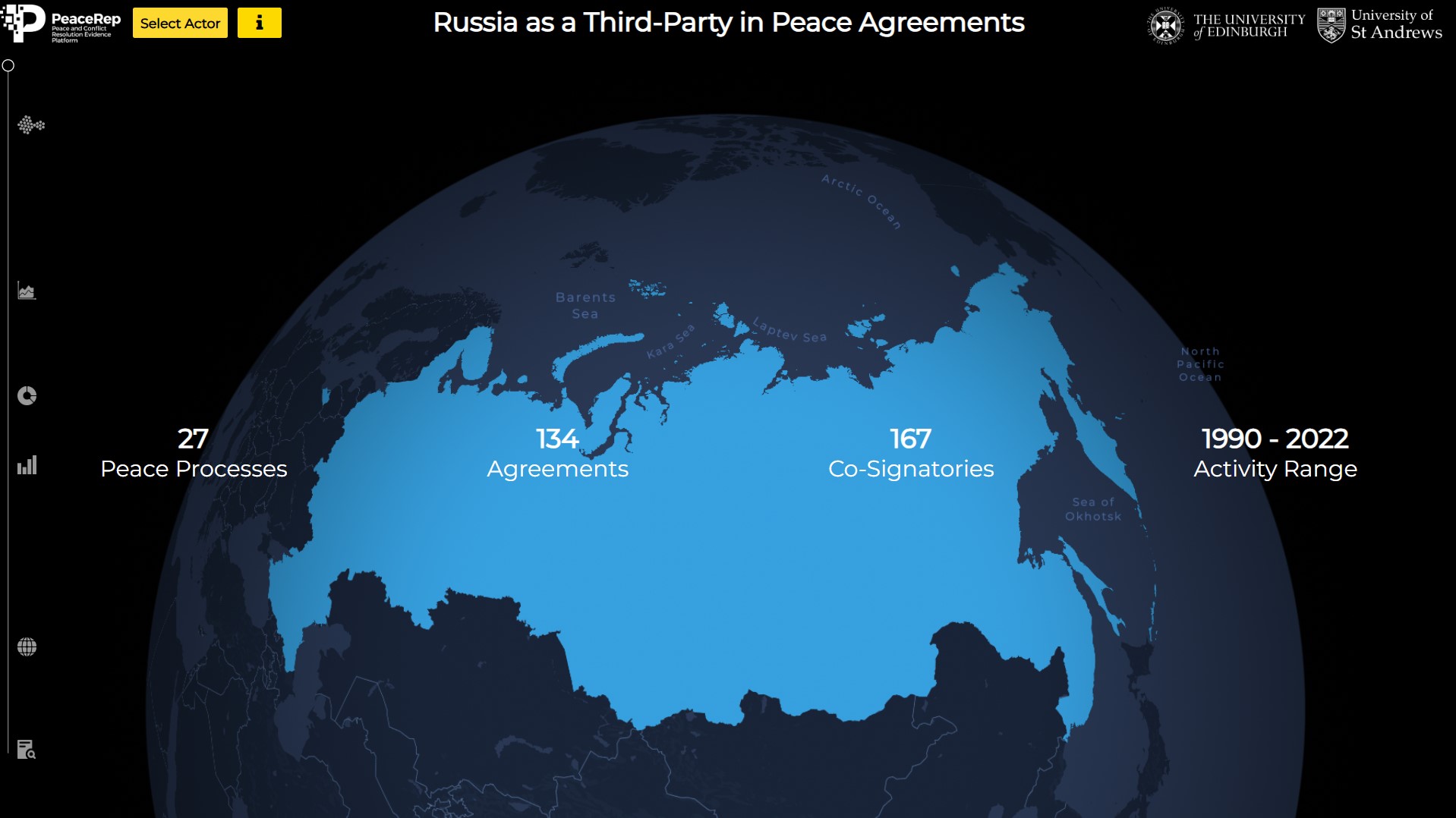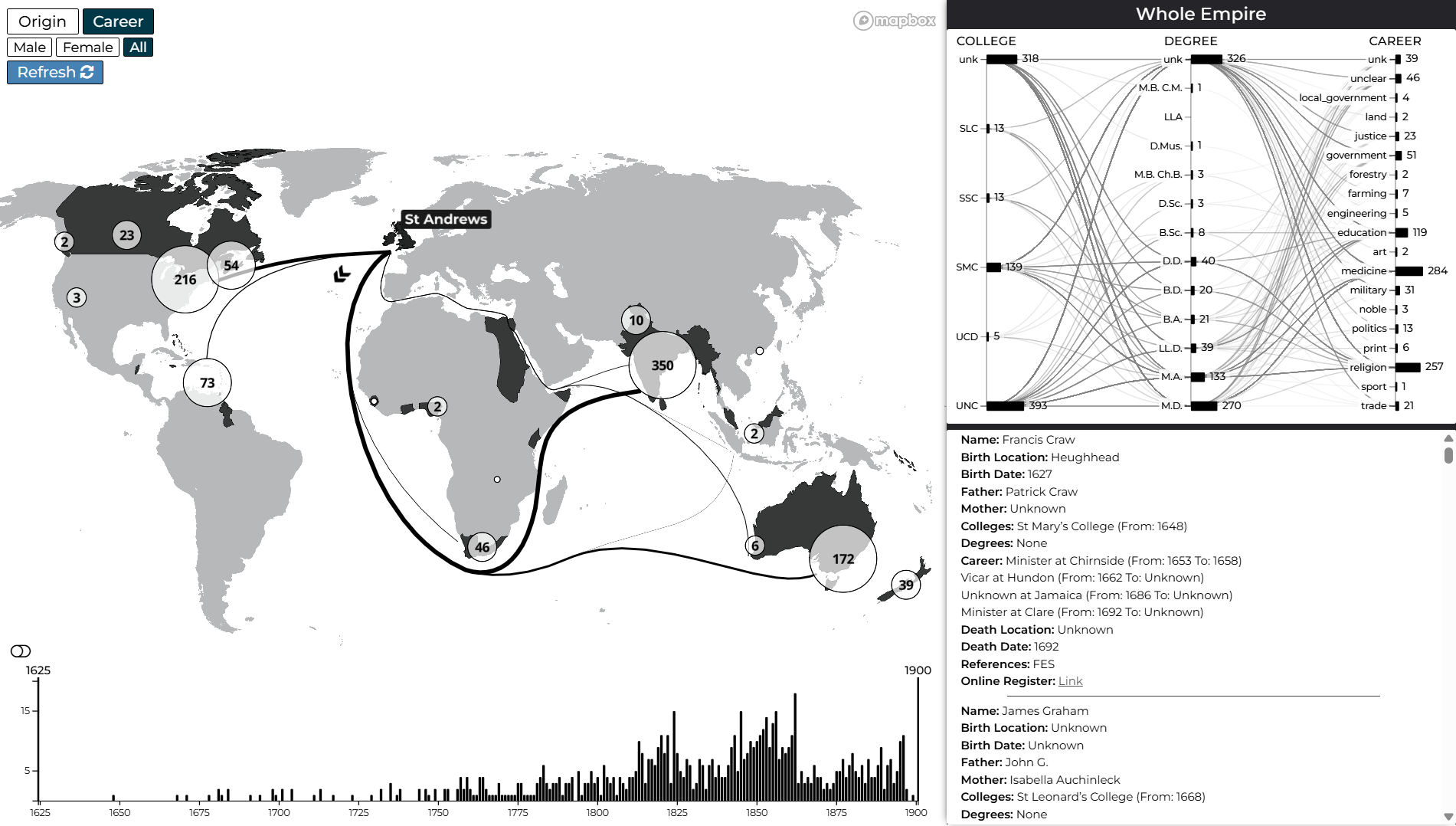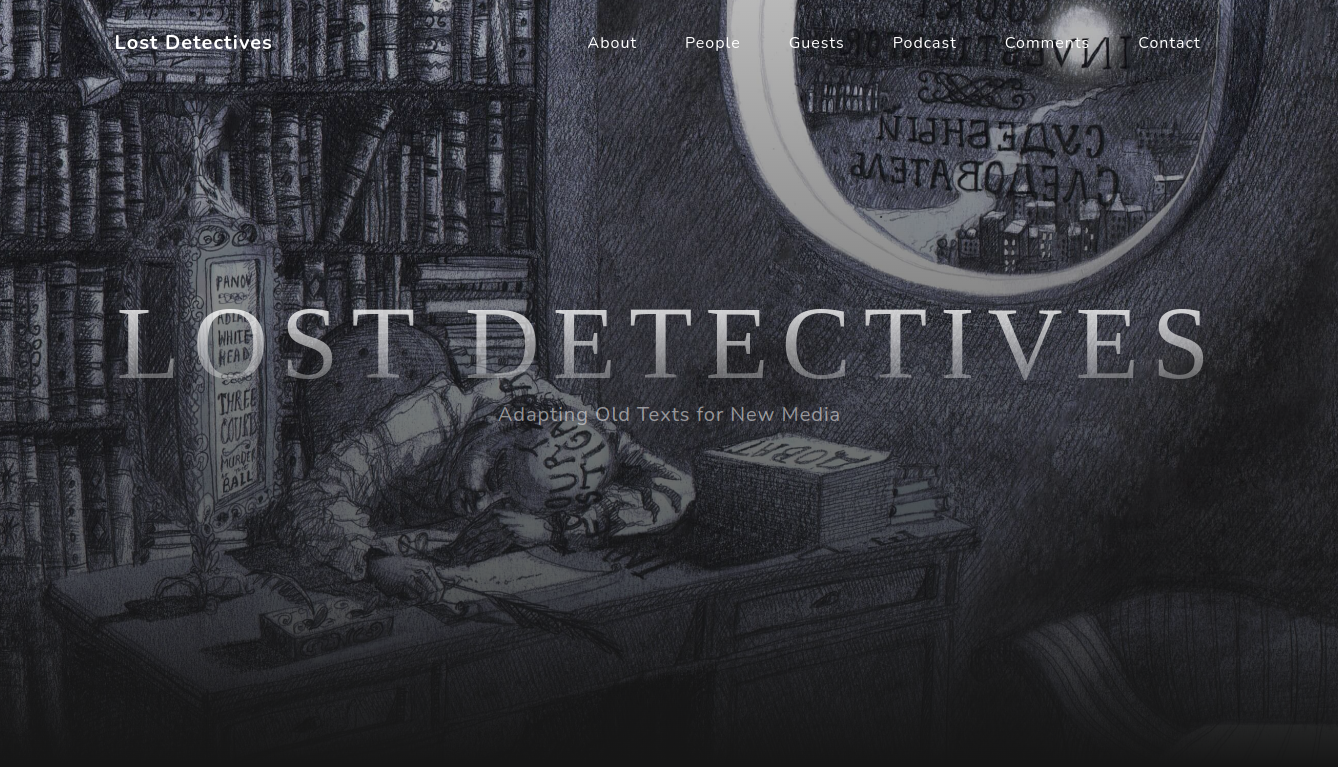Tomas Vancisin
Research Associate in Interactive
Data Visualization
School of Law (PeaceRep)
University of Edinburgh
Research Interests:
Digital Humanities
Information Visualization
Digital Heritage
PeaceTech

RESEARCH
Peace and Conflict Resolution Evidence Platform (PeaceRep)
School of Law, University of Edinburgh
I am currently working at the University of Edinburgh, focusing on visualization of transition trajectories and the mediation space of peace and transition processes.
Publications:
Henry, N., Vancisin, T. (2025). Visualizing Peace and Transition Process Trajectories: Enhancing Decision-Making Through PeaceTech and Iterative Design. In: Schrepp, M. (eds) Design, User Experience, and Usability. HCII 2025. Lecture Notes in Computer Science, vol 15794. Springer, Cham. https://doi.org/10.1007/978-3-031-93221-2_3
Legacies of the Empire
School of History, University of St Andrews
In summer 2023 I worked as a postgraduate research assistant for the Legacies of the Empire Project, exploring how the University of St Andrews benefited from the British colonial past. Using the database I developed during my PhD, I visualized birth locations, career paths, and alumni occupations in the British colonies. In 2025 I revisited the data and in collaboration with the historian Aileen Fyfe, developed an interactive web-based visualization that allows an open-ended exploration of St Andrews colonial connections.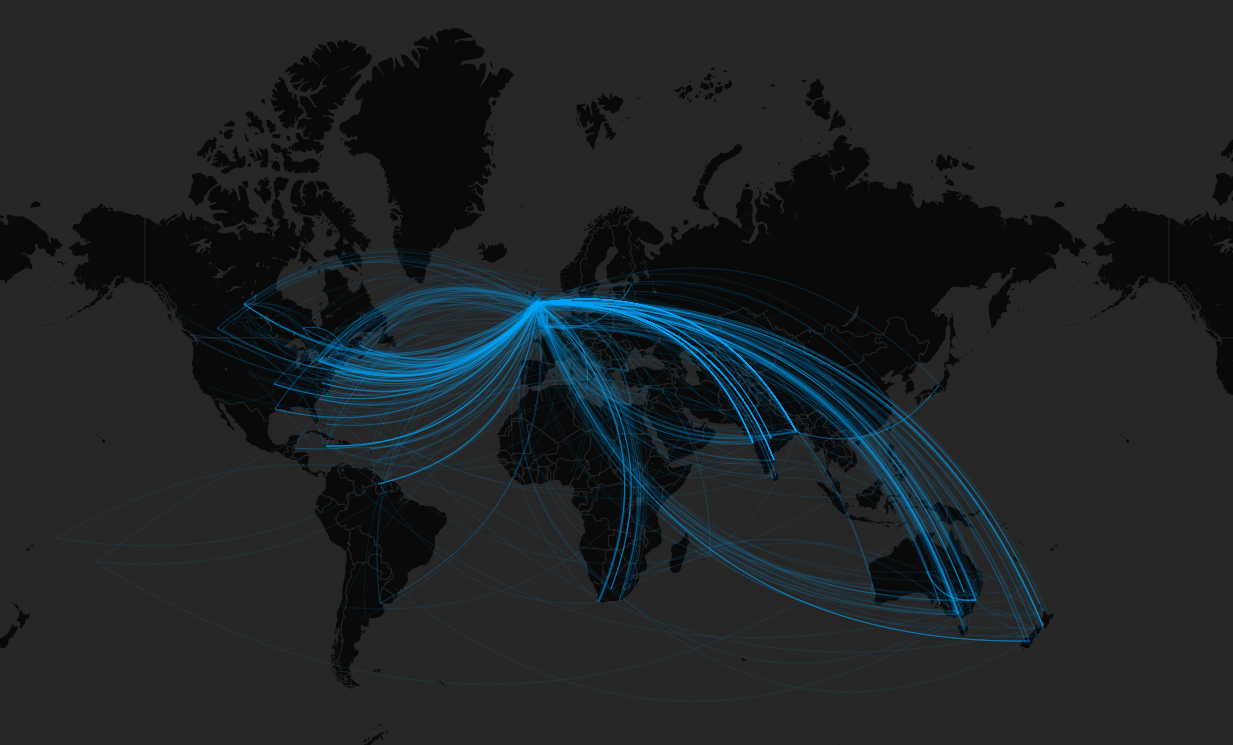

Career paths of St Andrews students travelling to and from the British colonies between 1700 and 1897.
Publications:
Vancisin, T. & Fyfe, A. (2025). St Andrews students and the Empire, 1700-1897 : Methods and Limitations. Legacies of Empire working papers, University of St Andrews, pp. 1-10.
Fyfe, A., Robinson, I., Vancisin, T., Leith, S. J. H., & Ylitalo, M. W. (2025). The University of St Andrews and the legacies of Empire, 1700-1900. University of St Andrews. https://doi.org/10.5281/zenodo.14975043
PhD Research
School of Computer Science, University of St Andrews
My research is at the intersection of Information Visualization, Digital Humanities, and History. I work with historical student and staff biographical records from the University of St Andrews spanning the period 1579-1897, and I have been focusing on visualizing the transformations these records have gone through in the past century (manual transcription, content expansion, digitization etc.). The aim of this work is to highlight transparency, emphasize people's labor, and provide more critical understanding of such historical collections.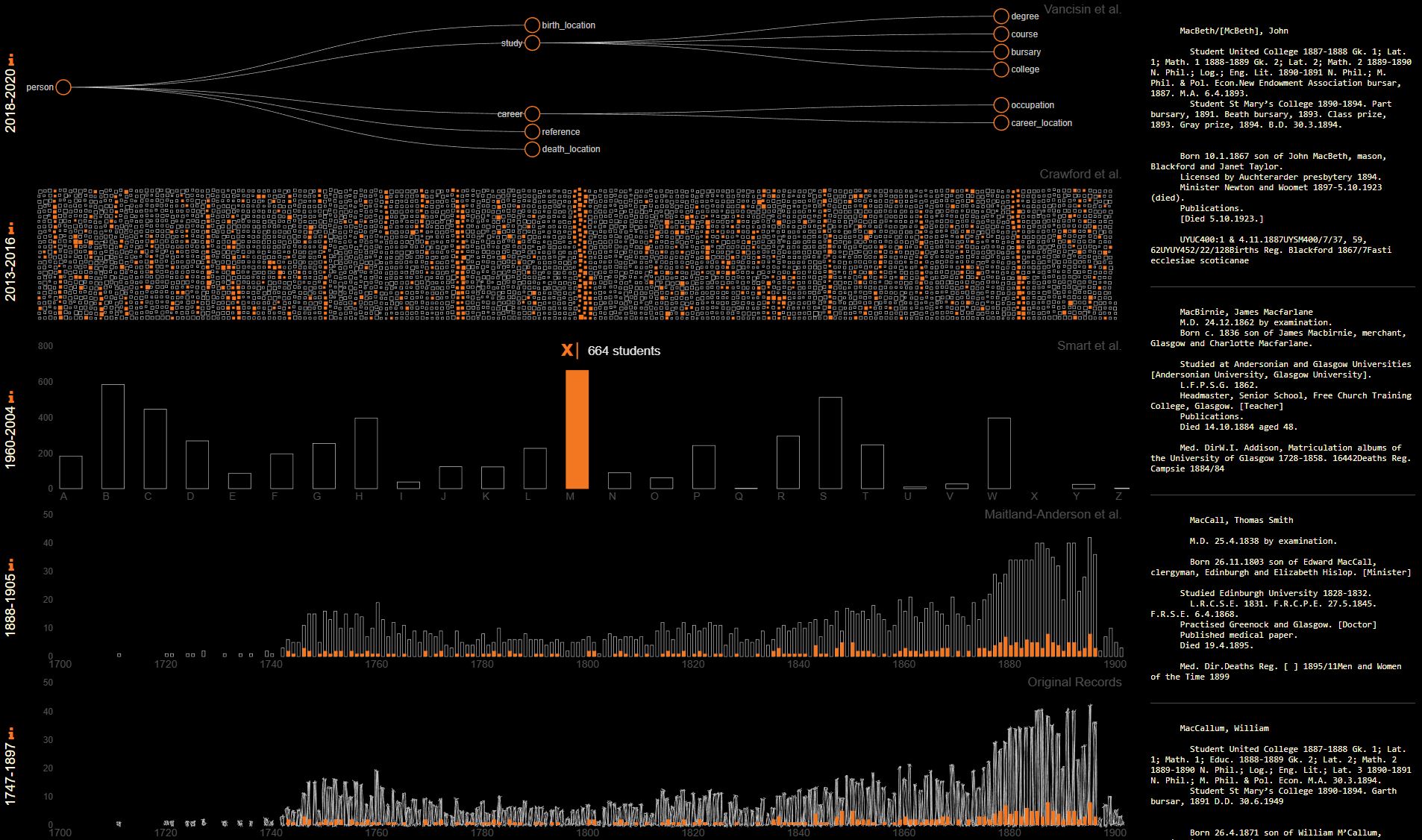


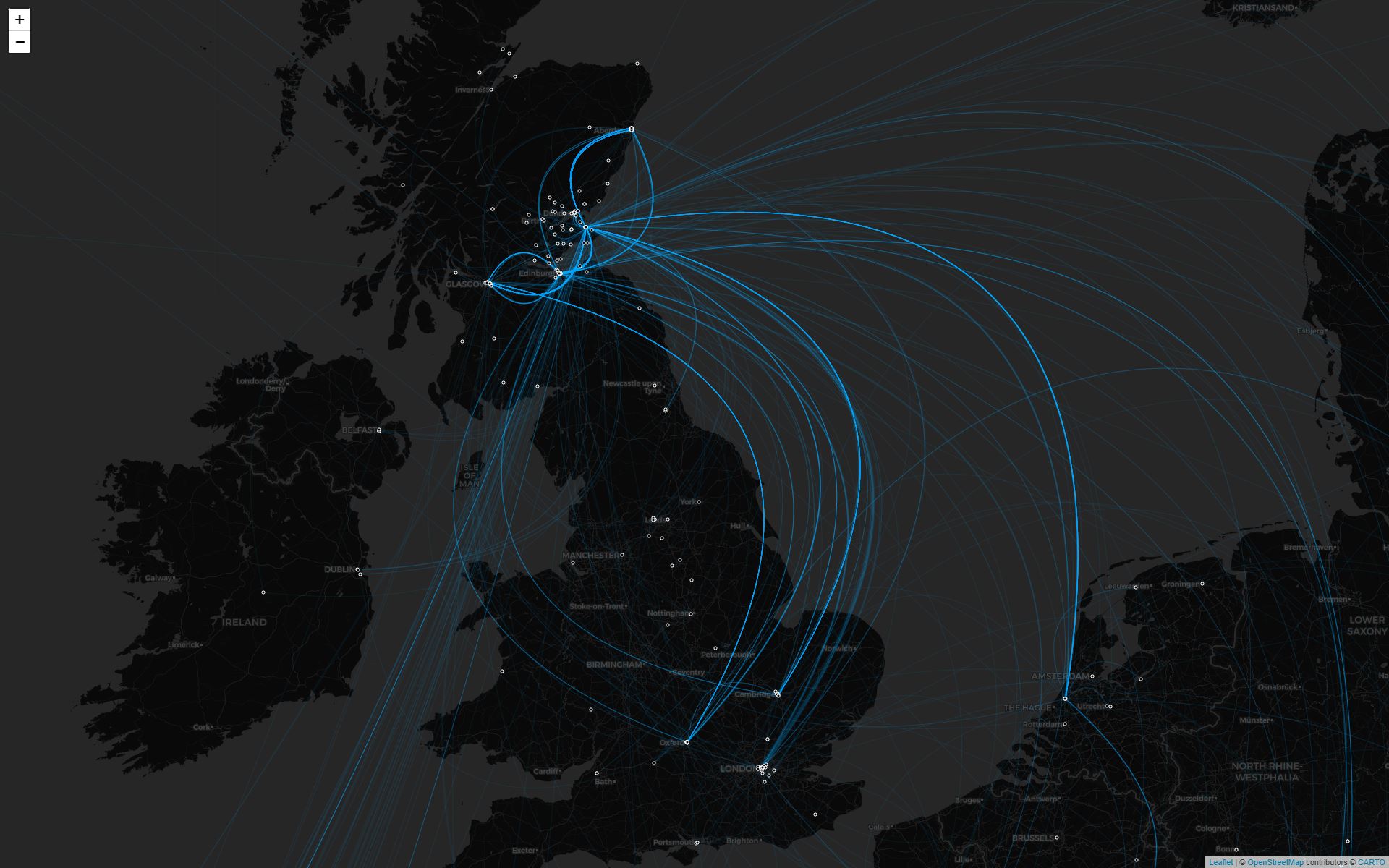
First visualization prototype of the University record transformations 1888 - 2022
Early exploration of student birth locations and college affiliation 1747 - 1897 (Tableau).
Emphasizing differences between current political map of the word and the period during the British empire.
Exploring student paths to other universities in the UK and Europe.
Publications:
Vancisin, T., Clarke, L., Orr, M., & Hinrichs, U. (2025). Provenance Visualization as an Entry Point to the History and Curation of Information Collections. Journal of Visualization and Interaction. 1, 1 (Apr. 2025). DOI:https://doi.org/10.54337/jovi.v1i1.8436. Press.
Vancisin, T., Clarke, L., Orr, M., & Hinrichs, U. (2023). Provenance Visualization: Tracing People, Processes and Practices Through a Data-Driven Approach to Provenance. In 2023 Digital Scholarship in the Humanities. Oxford University Press.
Vancisin, T., Orr, M., & Hinrichs, U. (2020, October). Externalizing Transformations of Historical Documents: Opportunities for Provenance-Driven Visualization. In 2020 IEEE 5th Workshop on Visualization for the Digital Humanities (VIS4DH) (pp. 36-42). IEEE.
Vancisin, T., Orr, M., & Hinrichs, U. (2020). Illuminating Past Labor: Making Transformation Processes of Historical Documents Visible. In Proceedings of Digital Humanities 2020 (DH20).
Vancisin, T., Crawford, A., Orr, M. M., & Hinrichs, U. (2018). From People to Pixels: Visualizing Historical University Records. In Transimage 2018: Proceedings of the 5th Biennial Transdisciplinary Imaging Conference 2018 (pp. 41-57)
Lost Detectives
School of Modern Languages, University of St Andrews
During my PhD research I worked as a research assistant for the Lost Detectives project at the School of Modern Languages in St Andrews. The aim of this Knowledge Exchange and Impact project was to bring works of nineteenth-century Russian crime fiction to greater public prominence through adaptation.
About Me
For more information about me and my work, here is my CV.
